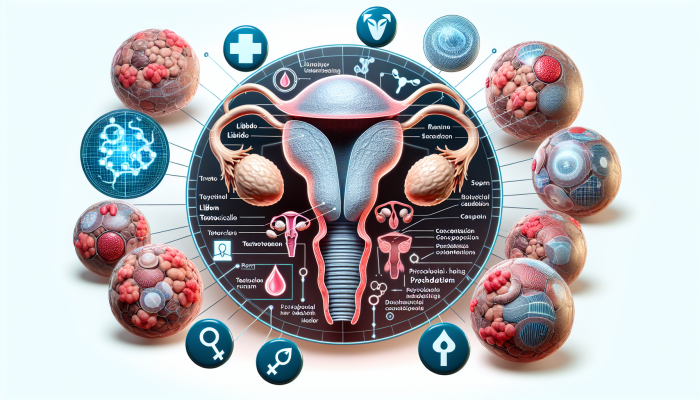Unlocking Optimal Health: The Crucial Role of Testosterone Testing Standards
Testosterone plays a vital role in maintaining hormonal health for both men and women, influencing a variety of physiological and psychological functions. This essential steroid hormone is necessary for numerous bodily processes, such as promoting muscle growth, regulating sexual desire, maintaining bone density, and supporting mental well-being. Ensuring that your testosterone levels remain within an optimal range can significantly enhance the quality of your life, influencing your energy levels, mood stability, and cognitive capabilities. Hence, understanding testosterone testing standards is crucial for identifying hormonal imbalances and improving overall health and wellness effectively.
Essential Insights into the Impact of Testosterone on Overall Health

In men, the majority of testosterone is produced in the testicles, whereas women produce a smaller amount in their ovaries. Although commonly associated with male traits like muscle mass and body hair, testosterone is essential for many functions in both genders. Fluctuations in testosterone levels can significantly affect libido, sperm production, and cognitive abilities such as attention and concentration. Insufficient testosterone may result in health complications including depression, chronic fatigue, and diminished sexual performance, emphasizing the necessity of maintaining balanced hormone levels for optimal health.
Furthermore, testosterone also plays a pivotal role in influencing psychological well-being. Studies suggest that adequate testosterone levels are linked to emotional stability and resilience against stressors. This underscores the importance of monitoring and understanding your testosterone levels, particularly if you experience noticeable changes in your emotional or physical health.
Delving into the Development of Testosterone Testing Standards
The establishment of testosterone testing standards is the result of comprehensive clinical research conducted on healthy individuals across diverse demographics. These studies take into account various factors such as age, sex, and the specific time of day when the test occurs. Notably, testosterone levels experience natural fluctuations throughout the day, typically reaching their peak in the early morning hours. Consequently, laboratories adjust their standards to reflect these natural variations to ensure precise evaluations of hormonal health.
It is essential to recognize that reference ranges may differ among laboratories due to variations in testing methods and the populations they serve. Therefore, a result that is considered “normal” in one laboratory may not hold the same status in another facility. This reality emphasizes the importance of consulting with a healthcare provider for an accurate interpretation of your results, taking into account your individual circumstances and medical history.
Understanding Variations in Testosterone Testing Standards Among Laboratories
There is inherent variability in testosterone testing standards among different laboratories, influenced by a range of factors. Each laboratory may adopt different testing methods that vary in their precision and sensitivity. For instance, some laboratories might utilize immunoassay tests, while others could employ advanced techniques such as liquid chromatography, leading to potential discrepancies in test outcomes.
Moreover, the reference populations used to develop these norms can greatly influence the resulting values. If a laboratory predominantly tests individuals from a specific age group or ethnic background, its established norms may not accurately reflect the larger population. Therefore, it is essential to obtain test results from a reputable laboratory and consult with a healthcare professional to discuss the implications of your results regarding your medical history.
Guidelines for Accurately Interpreting Your Testosterone Test Results

Gaining a thorough understanding of how to interpret your testosterone test results can initially seem complex; however, it becomes manageable with a solid grasp of the established standards and their implications. Generally, testosterone test results are quantified in nanograms per deciliter (ng/dL) and can vary considerably based on numerous factors, including age and sex.
A Step-by-Step Approach to Analyzing Your Testosterone Test Results
The first step in evaluating your testosterone test results involves comparing them against the testosterone testing standards. Although normal testosterone levels can fluctuate, men typically exhibit levels ranging from 300 to 1,000 ng/dL, while women generally fall within the 15 to 70 ng/dL range. Should your results fall outside these established thresholds, it may be necessary to delve deeper into the underlying causes of these discrepancies.
Additionally, it is crucial to analyze results in the context of your overall health. Testosterone levels that may seem low for one person could be entirely normal for another based on factors such as age, health status, and personal circumstances. Consulting with a healthcare professional will allow for a comprehensive evaluation of your results, determining whether further testing or intervention is required.
The Health Consequences of Low Testosterone Levels
Low testosterone levels, clinically referred to as hypogonadism, can lead to a host of significant health complications. Symptoms can vary widely but often include reduced libido, chronic fatigue, diminished muscle mass, and mood fluctuations. If you are experiencing these symptoms, it is advisable to undergo a testosterone test to establish whether your levels are below the accepted range.
The causes of low testosterone can be multifaceted, stemming from underlying medical conditions as well as lifestyle factors. Conditions such as diabetes, obesity, and disorders affecting the pituitary gland can severely impact testosterone production. Additionally, environmental variables like exposure to endocrine disruptors or toxic chemicals can also contribute to hormonal imbalances. A comprehensive medical evaluation is essential to identify the root cause and develop an appropriate treatment plan.
Health Risks Associated with Elevated Testosterone Levels

On the flip side, elevated testosterone levels can also pose serious health risks. High testosterone levels may be associated with medical conditions such as testicular tumors or anabolic steroid misuse. Symptoms of excess testosterone can manifest as acne, increased blood pressure, and mood changes, including heightened irritability and aggression.
It is vital to refrain from jumping to conclusions based solely on elevated test results. Consultation with a healthcare professional is essential for interpreting these findings and considering additional diagnostic evaluations to identify any underlying issues. Furthermore, discussing the potential risks linked to elevated testosterone levels, including cardiovascular complications and other adverse effects, is equally important.
Comprehensive Factors Impacting Testosterone Levels
The levels of testosterone are not fixed; they can be influenced by numerous factors. Understanding these influences empowers you to make informed decisions concerning your hormonal health and overall well-being.
The Influence of Age on Testosterone Levels
Age is a critical factor influencing testosterone testing standards. Research indicates that testosterone levels in men typically begin to decline gradually after reaching approximately 30 years of age. This decline may occur slowly but can have significant implications for both physical and mental health over time.
In women, although testosterone levels are naturally lower, they too can decrease with age, particularly after menopause. This reduction may lead to symptoms such as fatigue, decreased libido, and emotional fluctuations. Therefore, it is essential for individuals of all genders to monitor their testosterone levels as they age and seek medical advice if they notice signs of hypogonadism.
The Impact of Lifestyle Choices on Testosterone Levels
Lifestyle choices play a substantial role in maintaining optimal testosterone levels. Embracing healthy lifestyle habits, including consuming a balanced diet, engaging in regular exercise, and ensuring adequate sleep, is crucial for sustaining appropriate hormonal levels. Studies have demonstrated that physical activity, particularly resistance training, can effectively enhance testosterone production.
Conversely, lifestyle risk factors such as obesity, a sedentary lifestyle, and chronic stress can disrupt hormonal balance. Increased stress, specifically, can elevate cortisol levels, which may inhibit testosterone production. By integrating stress management techniques like meditation or yoga into your routine, along with maintaining an active lifestyle, you can effectively support your hormonal health.
The Effects of Medications and Supplements on Testosterone Levels
Certain medications can significantly affect testosterone levels. Drugs such as corticosteroids, opioids, and some antidepressants may reduce testosterone production. If you are currently taking medications and harbor concerns about your testosterone levels, it is advisable to discuss these with your healthcare provider.
Conversely, some dietary supplements claim to enhance testosterone levels, such as zinc and vitamin D. While some evidence suggests these supplements may benefit individuals with deficiencies, it is crucial to consult a healthcare professional before starting any supplementation regimen. Often, a balanced approach that emphasizes healthy dietary choices and an active lifestyle proves to be the most effective strategy for maintaining optimal hormonal levels.
Recognizing Symptoms and Diagnostic Techniques for Abnormal Testosterone Levels
Identifying the symptoms associated with abnormal testosterone levels is essential for early detection and timely intervention. This process typically involves a combination of physical examinations and laboratory testing.
Common Indicators of Low Testosterone Levels
Symptoms of low testosterone levels can vary among individuals, but several common signs may indicate a hormonal imbalance. Persistent fatigue is among the most frequently reported symptoms. If you experience a noticeable decline in energy levels that is not attributable to other factors, it could signify low testosterone.
A reduction in sexual desire serves as another critical indicator. Men may encounter difficulties in achieving or sustaining an erection, whereas women may notice a diminished interest in sexual activities. Additionally, reduced muscle mass, increased body fat, and emotional fluctuations, such as anxiety or depression, can also be associated with low testosterone levels.
When to Consult a Healthcare Professional for Testosterone Testing
If you experience ongoing symptoms or have specific concerns regarding your testosterone levels, it is advisable to seek guidance from a healthcare professional. Early evaluation can help detect potential underlying health issues and establish a personalized action plan.
For men over 40 or women approaching menopause, it may be especially wise to discuss testosterone testing with your doctor, even if you do not display overt symptoms. Regular screenings can assist in effectively monitoring your testosterone levels and making informed health decisions.
The Diagnostic Process for Assessing Testosterone Levels
The diagnostic pathway for evaluating testosterone levels typically begins with a medical consultation, during which your symptoms and medical history are meticulously reviewed. If a hormonal imbalance is suspected, your doctor may recommend a blood test to measure your testosterone levels.
Testing is usually conducted in the morning when testosterone levels are at their peak to ensure the most accurate results. If abnormal results are found, further testing may be necessary to investigate the underlying cause, which could include assessments of pituitary gland function or additional hormonal evaluations. Accurate diagnosis is vital for formulating an effective treatment plan tailored to your specific needs.
Exploring Treatment Options and Therapeutic Approaches for Abnormal Testosterone Levels
Once abnormal testosterone levels are identified, a variety of treatment options may be available. The choice of therapy often depends on the underlying cause and individual preferences.
Effective Strategies for Treating Low Testosterone Levels
Options for managing low testosterone levels may include testosterone replacement therapy (TRT), aimed at restoring normal hormonal levels. TRT can be administered through various methods, including injections, gels, or transdermal patches. This approach has been shown to effectively alleviate symptoms associated with hypogonadism, such as fatigue, diminished libido, and muscle weakness.
However, it is crucial to discuss the potential risks and benefits of TRT with a healthcare provider. While many patients report significant symptom relief, there are potential risks involved, including cardiovascular issues and various side effects. Regular monitoring of hormonal levels is often necessary to ensure that the treatment remains both effective and safe.
Natural Strategies to Boost Testosterone Levels
For individuals preferring to avoid hormonal therapies, several natural strategies can help enhance testosterone levels. Maintaining a healthy lifestyle, characterized by a balanced diet, is critical. Foods rich in zinc, vitamin D, and omega-3 fatty acids are particularly beneficial for testosterone production.
Furthermore, regular physical activity, especially resistance training, serves as an effective method to stimulate testosterone production. Incorporating stress management techniques such as meditation, yoga, or engaging in leisure activities can help reduce cortisol levels, thereby supporting optimal hormonal balance.
Assessing the Risks and Benefits of Testosterone Replacement Therapy
Testosterone replacement therapy can yield numerous benefits, including improved libido, enhanced mood, and increased muscle mass. However, this therapy also carries potential risks, such as an increased risk of cardiovascular disease, sleep apnea, and prostate-related complications.
Therefore, it is essential to carefully weigh the advantages and disadvantages of TRT. A comprehensive consultation with a healthcare professional is necessary to determine whether this treatment option is appropriate for your specific situation. Regular follow-ups are also critical to monitor the effects of treatment and make any necessary adjustments.
The Connection Between Testosterone Levels and Overall Health
Testosterone levels significantly influence various facets of health, including mental wellness, bone density, and cardiovascular function. Understanding these interconnections enables you to better manage your health proactively and effectively.
How Testosterone Levels Affect Mental Health
Research indicates that testosterone levels greatly impact mental health. Low testosterone levels are frequently linked to mood disorders, such as depression and anxiety. Individuals who maintain adequate testosterone levels typically demonstrate greater emotional resilience and improved quality of life.
It’s essential to recognize that addressing hypogonadism can lead to positive changes in mental health. Patients often report enhanced mood and reduced depressive symptoms after normalizing their hormonal levels. This highlights the importance of monitoring testosterone levels, especially if you are facing mental health challenges.
The Role of Testosterone in Supporting Bone Health
Testosterone is crucial for maintaining bone health, as it helps preserve bone density and prevent osteoporosis. Sufficient testosterone levels contribute to the maintenance of bone mass and reduce the risk of fractures. This is particularly pertinent for older adults, as declines in testosterone levels can lead to increased bone fragility.
Research suggests that testosterone replacement therapy may also have a positive impact on bone density in both men and women experiencing hypogonadism. Therefore, regular monitoring of testosterone levels and considering appropriate treatment options are vital for sustaining optimal bone health.
Understanding the Relationship Between Testosterone and Cardiovascular Health
The relationship between testosterone levels and cardiovascular health is complex. Properly regulated testosterone levels support heart health by enhancing lipid metabolism and promoting vascular function. However, elevated testosterone levels, often associated with anabolic steroid use, can increase the risk of cardiovascular diseases.
Achieving a healthy hormonal balance is paramount. Regular monitoring of your testosterone levels and consulting with a healthcare professional can assist in navigating these intricate issues and maintaining optimal cardiovascular health.
Proactive Strategies for Testing and Monitoring Testosterone Levels
Preparing for a testosterone test and actively monitoring your testosterone levels is essential for ensuring optimal hormonal health. Here are some valuable tips to guide you through this process.
Effective Preparation for a Testosterone Test
Proper preparation for a testosterone test is crucial to guarantee accurate results. It is advisable to refrain from intense physical activity, alcohol consumption, and certain medications, such as corticosteroids, at least 24 hours prior to the test. Tests are typically conducted in the morning when testosterone levels are highest, providing the most reliable results.
Moreover, addressing any concerns or questions with your physician before the test is vital. Adequate preparation can significantly impact the accuracy of your results and deepen your understanding of your hormonal health.
Recommended Frequency for Testosterone Testing
The frequency of testosterone testing is often determined by individual symptoms and medical guidelines. For men over 40, annual testing may be advisable, particularly if concerns regarding low testosterone levels arise. For individuals undergoing treatment or exhibiting symptoms, more frequent testing may be necessary to monitor testosterone levels and adjust treatments accordingly.
Maintaining open communication with your healthcare provider is essential for determining the testing frequency that best fits your personal health circumstances.
The Importance of Continuous Monitoring of Testosterone Levels
Ongoing monitoring of testosterone levels is vital for assessing the effectiveness of treatments and identifying any changes in your hormonal health. This is particularly crucial for individuals undergoing testosterone replacement therapy, as adjustments may be required over time.
By diligently monitoring your testosterone levels, you can collaborate effectively with your healthcare professional to optimize your treatment and ensure a healthy hormonal balance. This proactive approach can significantly enhance your overall well-being and help prevent potential health complications in the future.
Common Questions Regarding Testosterone Testing Standards
Do testosterone levels fluctuate throughout the day?
Yes, testosterone levels naturally fluctuate throughout the day, typically peaking during the early morning hours.
What symptoms indicate low testosterone levels?
Common symptoms encompass persistent fatigue, decreased libido, mood swings, and loss of muscle mass.
How do testosterone levels influence mental health?
Low testosterone levels can contribute to mental health issues, such as depression and anxiety.
When should I consult a doctor for testosterone testing?
Consult a physician if you experience ongoing symptoms or have concerns regarding your testosterone levels.
What treatment options are available for low testosterone levels?
Available options include testosterone replacement therapy, lifestyle modifications, and natural therapies.
Is testosterone replacement therapy safe?
While beneficial for many patients, testosterone replacement therapy carries potential risks, including cardiovascular complications.
Can supplements help increase testosterone levels?
Some supplements may assist, but consulting a healthcare professional before initiating any supplementation is essential.
What is the normal testosterone range for men?
Normal testosterone levels in men typically range from 300 to 1,000 ng/dL.
Do women require testosterone testing?
Yes, women can also benefit from testosterone testing, particularly if they experience symptoms of hormonal imbalance.
What is the recommended frequency for testosterone testing?
The testing frequency depends on individual symptoms and medical history, but annual testing may be appropriate for men over 40.
Connect with us on Facebook!
This Article Was First Found On https://bloodtest.co.uk
The Article: Testosterone Testing Standards Explained: A Comprehensive Guide appeared first on: https://ezbloodtest.com
The Article Testosterone Testing Standards: Your Essential Guide Explained Was Found On https://limitsofstrategy.com


I find it fascinating how often testosterone levels are overlooked, especially when it comes to overall health discussions. I remember when a friend of mine was feeling unusually fatigued and down—after some back-and-forth with doctors, they finally checked his testosterone levels, and it turned out he was quite low. Just knowing that made a huge difference, as he was then able to pursue a treatment plan.
It’s wild how many times testosterone is just brushed off like a forgotten sandwich at the back of the fridge, isn’t it? Your friend’s story is a perfect example of when the “wait and see” approach can really drop the ball. Fatigue and moodiness can feel like a mess of reasons, but sometimes it really is just about those hormone levels dropping faster than a poorly thrown baseball.
“You’re absolutely right—testosterone levels can have a profound impact on well-being! If you’re interested in learning more about how to assess and understand testosterone’s role in health, check out this resource.”
https://brightsidehospitality.com/ParentAler
It’s so true how often testosterone levels get brushed aside in health conversations. Your friend’s experience highlights something that can really fly under the radar—fatigue and mood issues can stem from many factors, but hormonal imbalances, like low testosterone, are often overlooked.
It’s so true—testosterone levels often fly under the radar in health conversations. It’s striking how something that plays such a crucial role in mood, energy, and even motivation can go unchecked. Your friend’s experience highlights just how impactful this information can be. When people finally figure out the cause of their fatigue or mood issues, it can be a real game changer.
You bring up such an important point about testosterone and its often overlooked role in our overall well-being. It’s crazy how something that can have such a profound impact on how we feel day in and day out doesn’t get more attention in discussions about health.
“I’m glad you found the information resonant! If you’re interested in learning more about how to balance testosterone levels and improve overall wellness, check out this resource.”
https://brightsidehospitality.com/PhotoLeap
It’s really intriguing to hear how your friend’s journey unfolded. Testosterone levels definitely don’t get the spotlight they deserve in health discussions. It’s often the case that we look at more obvious signs and symptoms but overlook hormonal health, which is such a complex but crucial aspect of our well-being.
It’s really interesting how often testosterone doesn’t come up in the conversation about health until someone hits a wall like your friend did. That fatigue and feeling down can be such a tricky mix of symptoms—it’s easy to attribute it to stress or just a busy lifestyle. When the doctors finally checked his levels, it was like flipping a switch, right?